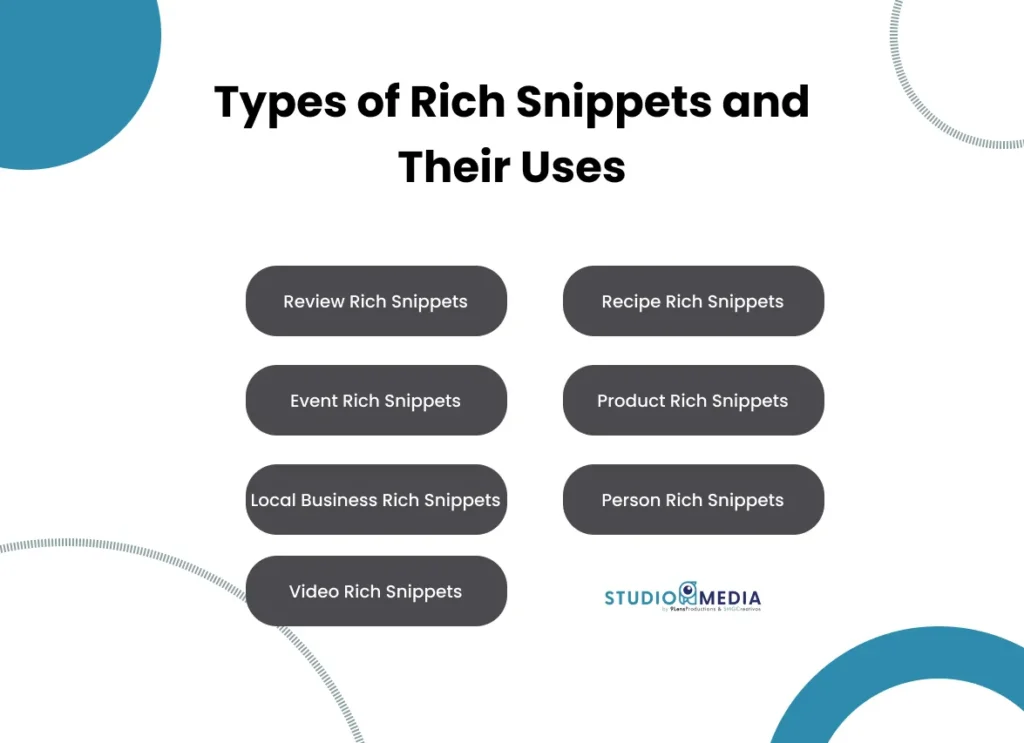Rich snippets are elements that enrich search engine results, providing additional information such as reviews, ratings, images, and more. SEO rich text is an integral part of this strategy, optimizing content to appear prominently in search results.
These elements not only enhance visibility but also increase click-through rates (CTR) by offering relevant information directly in search results.
What is SEO Rich Text?
SEO rich text refers to the optimization of enriched text snippets to improve visibility and performance in search engines. Rich snippets are generated from structured data that provides search engines with additional information about a webpage’s content. This approach allows search engines to better understand the context and relevance of the content, displaying more accurate and useful results for users.
For example, a rich snippet for a recipe might include preparation time, main ingredients, a picture of the finished dish, and the recipe’s rating. By providing this information directly in search results, users can quickly decide if the recipe is what they are looking for before clicking on the link.
Implementing Rich Snippets in SEO Strategies
To implement rich snippets in an SEO strategy, it is crucial to use structured data formats such as JSON-LD, Microdata, or RDFa. These formats allow developers to tag content with additional information that search engines can read and process. For instance, to add a product review, you can use specific markup that includes details like the product name, rating, and review author.
Additionally, it is important to validate the markup using tools like Google’s Rich Results Test to ensure that the structured data is implemented correctly. Once validated, rich snippets can significantly enhance website visibility and attract more organic traffic.
Differences Between Rich Snippets and Featured Snippets
While rich snippets enhance existing search results by adding additional information, featured snippets are highlighted information blocks that appear above regular search results. The goal of featured snippets is to answer questions instantly, contributing to the «zero click searches» phenomenon where users get their answers directly from the search results without clicking on any link.
Featured snippets can include lists, definitions, tables, and more. A case study shows that approximately 8% of all organic clicks go to featured snippets, highlighting their importance in an effective SEO strategy.
Benefits of Using Rich Snippets
Rich snippets offer several key benefits for SEO strategies. They improve visibility in search results by making links more attractive and useful to users. By providing additional information such as ratings, prices, and product availability, rich snippets can increase the click-through rate (CTR) and attract more qualified traffic to the website.
Moreover, rich snippets help establish the authority and relevance of the content by allowing search engines to better understand the website’s context. This can result in higher search rankings and greater exposure to the target audience.
How Rich Snippets Impact Search Behavior
Rich snippets directly influence user search behavior. By offering additional information immediately, rich snippets enhance the user experience and increase the likelihood of clicks. This not only improves the CTR but also reduces the bounce rate as users find the information they are looking for more efficiently.
The presence of rich snippets in search results can also provide a significant competitive advantage. Websites that effectively use rich snippets can stand out from the crowd, attracting more traffic and improving user retention.
Challenges and Technical Considerations
Implementing rich snippets can present several technical challenges. It is crucial to ensure that structured data is implemented correctly and is compatible with search engine guidelines. Using validation tools and following best practices recommended by Google can help overcome these challenges.
Another challenge is keeping the data updated and accurate. Rich snippets rely on the precision of structured data, so it is essential to regularly review and update content and markup to ensure they remain relevant and accurate.
Types of Rich Snippets and Their Uses
There are several types of rich snippets, each designed to provide different kinds of information to users. Below are some of the most common types and their uses:
- Review Rich Snippets: Show user ratings and comments about products or services. Useful for e-commerce sites and local businesses.
- Recipe Rich Snippets: Include details like preparation time, ingredients, and a picture of the dish. Ideal for cooking sites and recipe blogs.
- Event Rich Snippets: Provide information about upcoming events, such as dates, locations, and times. Beneficial for entertainment sites and event organizers.
- Product Rich Snippets: Display product information, including prices, availability, and ratings. Essential for e-commerce sites.
- Local Business Rich Snippets: Include details like address, opening hours, and reviews. Important for local businesses and professional services.
- Person Rich Snippets: Provide information about individuals, such as biographies and achievements. Useful for personality sites and professional profiles.
- Video Rich Snippets: Show details about videos, such as duration and a thumbnail. Beneficial for multimedia content sites.

Step-by-Step Guide to Implementing Rich Snippets on Your Website
Implementing rich snippets on your website might seem complex, but by following these steps, you can do it effectively:
- Identify the Necessary Rich Snippet Type: Determine which type of rich snippet is most relevant to your content. This will depend on your website’s nature and the type of information you want to highlight.
- Generate the Structured Markup: Use tools like Google’s Structured Data Markup Helper to generate the appropriate markup. You can choose from formats like JSON-LD, Microdata, or RDFa.
- Add the Markup to Your Website’s Code: Insert the generated code into the relevant sections of your webpage. Ensure the markup is correctly integrated and readable by search engines.
- Validate the Markup: Use Google’s Rich Results Test to validate your markup and ensure there are no errors. This tool will help you verify that the structured data is implemented correctly.
- Update and Maintain the Markup: Regularly review and update your markup to ensure the data remains accurate and relevant. This is crucial for maintaining the effectiveness of rich snippets over time.
- Monitor Performance: Use tools like Google Search Console to monitor the performance of your rich snippets. Analyze metrics like CTR and impressions to evaluate their impact and adjust your strategy as needed.
Conclusion
Rich snippets and SEO rich text are powerful tools for improving visibility and performance in search engines. By providing additional information directly in search results, these elements can attract more organic traffic and enhance the user experience. Implementing rich snippets requires a solid understanding of structured data and a continuous focus on content accuracy and relevance. With a well-executed strategy, rich snippets can significantly transform the effectiveness of SEO campaigns.







